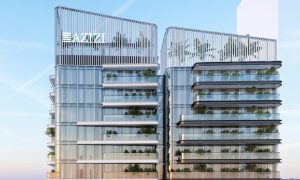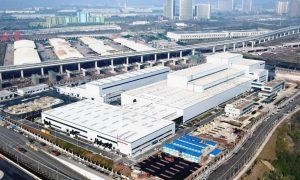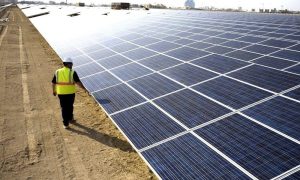Exclusive: Signify explores 3D-printed tailored luminaires
Kevin Raaijmaker tells MECN that a typical manufactured luminaire has a 47 per cent lower carbon footprint than a conventionally manufactured luminaire

“Our investment in 3D printing shows the company’s commitment towards reducing carbon footprint,” says Signify’s Kevin Raaijmaker.
In an exclusive interview with MECN, Raaijmaker, global commercial director- 3D Printing at Signify, said that there are multiple benefits to producing 3D printed luminaries on an industrial scale.
“Firstly, the material used to make a typical 3D printed luminaire has a 47 per cent lower carbon footprint than a conventionally manufactured metal luminaire. Secondly, all the products are designed for a circular economy, so that means we actively take them back and they are easy to dismantle, since we don’t use glue, screws or paints. Thirdly, if the opportunity is big enough, like in the case of India, Indonesia and US, we will set up a plant to respond faster to customers and avoid a lot of unnecessary transport. We are also actively trying to reuse/recycle plastic to make products if the material is good enough,” explained Raaijmaker.
Signify is the first lighting manufacturer to produce 3D printed luminaires on an industrial scale, according to its chief innovation officer, Olivia Qiu.
Raaijmaker stated that besides being sustainable, 3D printed luminaires are adaptable, responsive and agile. “With our online products, everything is standard- once a client places an order the printer knows what to do and the product is delivered within three weeks. For bespoke design, we start the design process, sometimes, literally overnight. We had a case in Russia, where the designer started working overnight and the first prototype was done by morning. It was based on an existing model with less engineering and more emphasis given to shape.”
“With Marks and Spencer (M&S), it was more challenging because everything had to be engineered to fit in with their existing ceiling. Also, depending on customers, they have to see the prototype, sometimes it has to be tested, so it might take a little longer. However, we can respond superfast. But where it makes the most difference is, once the prototype is done, we can start production immediately.”
M&S announced in Q4 2018 that it was in the first phase of rolling out thousands of 3D printed luminaires across stores in the UK by the end of 2020. It joined other major customers including Albert Heijn, SAS, Total and Praxis, which were all supplied by Signify.
Raaijmaker added: “In terms of materials and certification, Europe, Middle East and parts of Asia share the same rules on certain cases, hence the materials and production process are suitable and we have got all the labels and stamps we need in place. So, that will be less of a challenge. The most important thing is to understand our customers and adapt our portfolio for their applications.”
However, he pointed out that cost is an issue. “Nobody would be willing to pay 10 times more for luminaires, so we have to be competitive and affordable, as well as reliable. First thing is since it’s a lighting product, we had to focus on the material, the material had to be long-lasting and resistant to heat. Moreover, it’s a Philips product, so it needs to maintain the same quality.”
He added that the material in use currently is suitable for indoor use and semi-outdoor use. “We did a project for industrial waste, for example, for waiting areas – where we used luminaires specifically made for the purpose of a semi-outdoor environment, so not in direct sunlight or rain.”
“Today, we already have a tough material that we can use for a lot of applications. However, we are researching and looking into different type of materials which are suitable for outdoor use. It’s not available yet, but we are looking at it with our suppliers and that will be the next stage of development,” Raaijmaker concluded.














